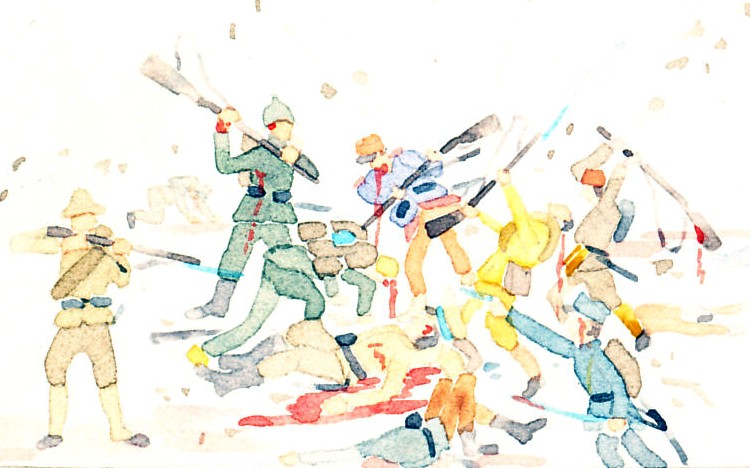From a series on the Great War, a 1916 map on the the Sixth Battle of the Isonzo, Italian commander Luigi Cadorna's offensive in August of the same year. The Italians crossed much of the Isonzo, and took Gorizia. The Austro-Hungarians continued to hold high ground to the east. © The Great War

Map labels include:
River Isonzo, Gorizia, Doberdo Plateau, Carso Plateau, Gradisca, Monfalcone, Gulf of Panzano
Text:
Area of General Cadorna's successful operations against Gorizia, August 1916. The Isonzo Valley forms the eastern line for the defense of Italy, and its possession was essential to the realization of Italian ideals. Gorizia, its main strategic position, was captured on August 9th, 1916, by the Italians, who thus secured possession of the key to Trieste.
Other views:
Front, Larger
